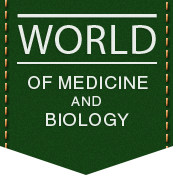| About the author: |
L. O. Miakinkova, Ye. M. Liulka, I. P. Katerenchuk ,Y. V. Teslenko, B. O. Pysana |
| Heading |
CLINICAL MEDICINE |
| Type of article |
Scentific article |
| Annotation |
Atrial fibrillation is the most common cardiac arrhythmia associated with thromboembolism, heart failure, depression, deterioration of quality of life, and reduced physical endurance. The rhythm control strategy is considered optimal in its treatment but is not always achievable. Right ventricular endocardial pacing is recommended for patients with bradycardic atrial fibrillation and preserved ejection fraction but can cause ventricular dyssynchrony. The aim of the study was to evaluate the effectiveness of implanting a dual-chamber pacemaker as an alternative method for sinus rhythm control in patients with long-standing bradysystolic atrial fibrillation and preserved ejection fraction, compared with single-chamber right ventricular pacing. Diastolic function, left atrial volume index, exercise tolerance, and quality of life were studied. Dual-chamber pacing is effective in rhythm control, and the severity of symptoms is reduced. Compared with single-chamber right ventricular pacing, there were decreased left atrial volume, tricuspid regurgitation rate, natriuretic peptide levels, increased exercise tolerance, improved quality of life indices, and reduced anxiety and depression. |
| Tags |
atrial fibrillation,heart failure,endocardial pacing,pacemaker,quality of life,exercise tolerance |
| Bibliography |
- Myakynkova LA, Teslenko YV, Pustovoyt AL, Yarmola TI, Tsyganenko IV. Antytrombotychna terapiya u patsiyentiv iz tripotinniam peredserd pered planovoyu kardioversiyeyu.Wiadomosci Lekarskie. 2016. T. LXIX, Nr. 6. р. 742–746. PMID: 28214808 [in Ukrainian]
- Nakaz MOZ Ukrainy vid 25 hrudnia 2014 roku №1003 Unifikovanyi klinichnyi protokol pervynnoyi, vtorynnoyi (spetsializovanoyi) ta tretynnoyi (vysokospetsializovanoyi) medychnoyi dopomohy «Depresiya (lehkyi, pomirnyi, tiazhkyi) depresyvni epizody bez somatychnoho syndromu abo z somatychnym syndromom, rekurentnyi depresyvnyi rozlad, dystymiya» http://www.dec.gov.ua/mtd/reestr.html [in Ukrainian]
- Andrew EE, John PD, Kenneth AE, NA Mark Estes 3rd, Roger AF, Leonard SG, et al. 2012 ACCF/AHA/HRS focused update incorporated into the ACCF/AHA/HRS 2008 guidelines for device-based therapy of cardiac rhythm abnormalities: a report of the American College of Cardiology Foundation/American Heart Association Task Force on Practice Guidelines and the Heart Rhythm Society J Am Coll Cardiol. 2013 Jan 22;61(3):e6–75. doi: 10.1016/j.jacc.2012.11.007.
- Anne BC, Seth JW, Philip BA, Eugene SC, Imran N, Lou S, et al. Biventricular Pacing for Atrioventricular Block and Systolic Dysfunction. N Engl J Med 2013; 368:1585–1593 doi: 10.1056/NEJMoa1210356
- Gerhard H, Tatjana P, Nikolaos D, Elena A, Jeroen JB, Carina BL, et al. 2020 ESC Guidelines for the diagnosis and management of atrial fibrillation developed in collaboration with the European Association of Cardio-Thoracic Surgery (EACTS). Eur Heart J. 2021 Feb 1; 42(5):373–498. doi: 10.1093/eurheartj/ehaa612.
- Nauta JF, Hummel YM, van der Meer P, Lam CSP, Voors AA, van Melle JP. Correlation with invasive left ventricular filling pressures and prognostic relevance of the echocardiographic diastolic parameters used in the 2016 ESC heart failure guidelines and in the 2016 ASE/EACVI recommendations: a systematic review in patients with heart failure with preserved ejection fraction. Eur J Heart Fail. 2018 Sep;20(9):1303–1311. doi: 10.1002/ejhf.1220. Epub 2018 Jun 7.
- Pieske B, Tschope C, de Boer RA, Fraser AG, Anker SD, Donal E, et al. How to diagnose heart failure with preserved ejection fraction: the HFA-PEFF diagnostic algorithm: a consensus recommendation from the Heart Failure Association (HFA) of the European Society of Cardiology (ESC). Eur Heart J 2019;40:3297–3317. doi: 10.1093/eurheartj/ehz641.
- Theresa AM, Marco M, Marianna A, Roy SG, Andreas B, Michael B, et al. 2021 ESC Guidelines for the diagnosis and treatment of acute and chronic heart failure Eur Heart J 2021 Sep 21;42(36):3599–3726. doi: 10.1093/eurheartj/ehab368.
- Walters TE, Wick K, Tan G, Mearns M, Joseph SA, Morton JB, et al. Symptom severity and quality of life in patients with atrial fibrillation: psychological function outweighs clinical predictors. Int J Cardiol 2019; 279:84–89. doi: 10.1016/j.ijcard.2018.10.101.
- Wynn GJ, Todd DM, Webber M, Bonnett L, McShane J, Kirchhof P, et al. The European Heart Rhythm Association symptom classification for atrial fibrillation: validation and improvement through a simple modification. Europace 2014 Jul;16(7):965–72. doi: 10.1093/europace/eut395.
|
| Publication of the article |
«World of Medicine and Biology» №3(85), 2023 year, 157-161 pages, index UDK 616.12-008.3-06-07 |
| DOI |
10.26724/2079-8334-2023-3-85-157-161 |
